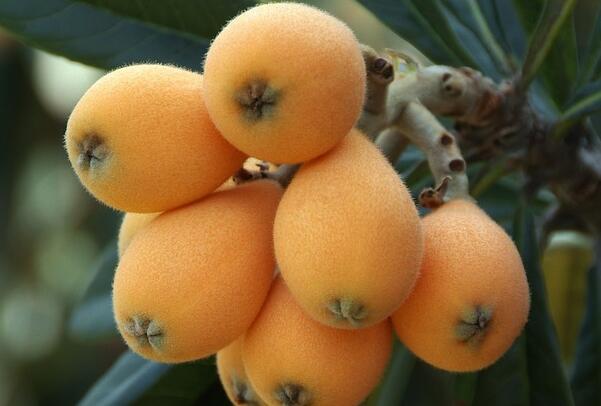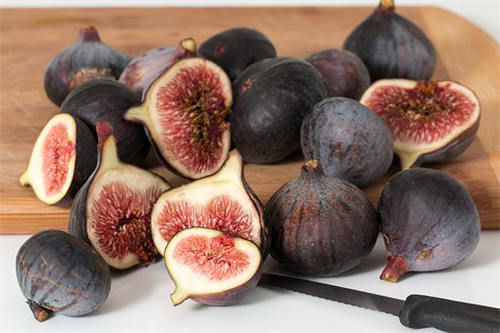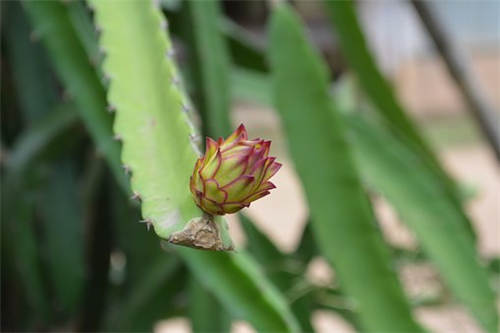How many times a year does loquat blossom? How many times do you bear fruit? How can it blossom and bear fruit?
Loquat, also known as Golden Pill, is a relatively common cash crop in China, which has the reputation of "the emperor of fruit", because it has the effects of beauty, moistening lungs and cough, etc., and is quite popular with people. How many fruits? How does it bear fruit?

Loquat trees generally bloom in the same year and bear fruit in the following year, which blooms once a year, usually from October to December, and bears fruit once a year, in May to June of the second year. However, it takes three years for a loquat tree to be sown, transplanted, grafted and planted, and then four years to bear fruit. 10~40 years is the flourishing fruit period. Grafted seedlings are easier to bear fruit than seedlings. If seeds are planted, it will take a long time, at least 5 years. Grafted seedlings generally take more than 3 years to bear fruit.
Planting methods:
1. Temperature
Loquat originated in subtropical zone and required higher temperature. The annual average temperature above 12℃ could grow normally, but the annual average temperature for economic cultivation should be 15~17℃, and there was no cold weather. Loquat flowering in late winter and early spring, winter and spring low temperature will affect its flowering. The temperature is-6℃ for flowering,-3℃ for young fruit, 10℃ for pollen germination, 20℃ for pollen germination. However, when the temperature or ground temperature reaches above 30℃, the growth of branches and roots is slow and bad, and the fruits are exposed to 35℃ 7~15 days before picking, which is easy to cause sunburn damage and even lose edible value.
2. Soil
Loquat is not strict with soil requirements, adaptability is wide, general soil can grow fruit, but with sand or gravel more loose soil growth is better. Loquat planting should be selected flat, deep loose soil layer, fertile, rich in organic matter over the years cultivated high-yield dry land, soil pH6.0 is the most suitable, land selection must consider water, ensure that in November of each year to May of the next year orchard irrigation, transportation and transportation convenience. It is not advisable to choose land with low and flat terrain that is easy to accumulate water. Before planting, it should be deeply ploughed for more than 30cm.
3. Planting time
Irrigation conditions should be planted in February to March; no irrigation conditions should be planted in mid-June (early rainy season). Loquat trees grow fast in warm climate, planting density should be 60~70 plants/mu, plant spacing density should be 3m×4m or 3m× 3.5 m, fruits and fruits can be produced after 3 years of planting, thinning should be carried out after a certain number of years, which is beneficial to management and early high yield.
4. Cultivation methods
In September to October of one year before planting, the planting pit with depth of 60cm, mouth width of 80cm and bottom width of 70cm shall be excavated while the soil is wet, and the topsoil and subsoil shall be stacked separately. 30kg farm manure or sugar mud and 0.8kg calcium magnesium phosphate fertilizer are applied to each planting pit as base fertilizer, mixed with topsoil and applied to planting holes, and then the original subsoil is completely backfilled. Backfilling work must be completed 2 months before planting loquat seedlings, so that the base fertilizer is fully decomposed and the filling is solid. Transplanted seedlings should be free of diseases and insect pests, dark green leaves, developed roots, more than 1 cm in diameter of the joint, good joint healing, 45~50cm above the joint (preferably branched). When planting, the root neck of seedlings should be level with the ground and not too deep. Some leaves and shoots should be cut off to reduce evaporation. When planting, let the fine soil fully contact with the roots, compact the soil around the roots, pour about 20L fixed root water for each plant, and cover a layer of fine soil after the water seeps down. Dry at 45-50cm above the ground.
Time: 2019-04-10 Click:
- Prev

How many times a year do figs bear fruit? How to plant high yield?
Fig, also known as milk berry, is a common economic fruit tree in China. It is very popular because of its high edible value and ornamental value. How many times a year do figs bear fruit? How to plant high yield? How many times a year do figs bear fruit? Figs usually bear fruit twice a year, that is, summer fruit and autumn fruit.
- Next

How many times a year does the dragon fruit bloom? How many times do you bear fruit? How much fruit can a tree bear? How do you plant it?
The dragon fruit, also known as the red dragon fruit, is a relatively common fruit on the market. It is very popular because of its anti-aging and antioxidant effects. Now most families also like to grow it at home. How many times a year do the dragon fruit trees bloom? How many times do you bear fruit? How much fruit can a tree bear? How to plant
Related
- Fuxing push coffee new agricultural production and marketing class: lack of small-scale processing plants
- Jujube rice field leisure farm deep ploughing Yilan for five years to create a space for organic food and play
- Nongyu Farm-A trial of organic papaya for brave women with advanced technology
- Four points for attention in the prevention and control of diseases and insect pests of edible fungi
- How to add nutrient solution to Edible Fungi
- Is there any good way to control edible fungus mites?
- Open Inoculation Technology of Edible Fungi
- Is there any clever way to use fertilizer for edible fungus in winter?
- What agents are used to kill the pathogens of edible fungi in the mushroom shed?
- Rapid drying of Edible Fungi

